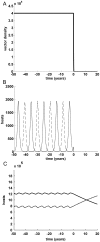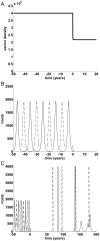A model framework to estimate impact and cost of genetics-based sterile insect methods for dengue vector control
- PMID: 21998654
- PMCID: PMC3187769
- DOI: 10.1371/journal.pone.0025384
A model framework to estimate impact and cost of genetics-based sterile insect methods for dengue vector control
Abstract
Vector-borne diseases impose enormous health and economic burdens and additional methods to control vector populations are clearly needed. The Sterile Insect Technique (SIT) has been successful against agricultural pests, but is not in large-scale use for suppressing or eliminating mosquito populations. Genetic RIDL technology (Release of Insects carrying a Dominant Lethal) is a proposed modification that involves releasing insects that are homozygous for a repressible dominant lethal genetic construct rather than being sterilized by irradiation, and could potentially overcome some technical difficulties with the conventional SIT technology. Using the arboviral disease dengue as an example, we combine vector population dynamics and epidemiological models to explore the effect of a program of RIDL releases on disease transmission. We use these to derive a preliminary estimate of the potential cost-effectiveness of vector control by applying estimates of the costs of SIT. We predict that this genetic control strategy could eliminate dengue rapidly from a human community, and at lower expense (approximately US$ 2~30 per case averted) than the direct and indirect costs of disease (mean US$ 86-190 per case of dengue). The theoretical framework has wider potential use; by appropriately adapting or replacing each component of the framework (entomological, epidemiological, vector control bio-economics and health economics), it could be applied to other vector-borne diseases or vector control strategies and extended to include other health interventions.
Conflict of interest statement
Figures


 ), that the vector and virus are eliminated. Over subsequent years, immunity is lost from the host population.
), that the vector and virus are eliminated. Over subsequent years, immunity is lost from the host population.
 ), the vector population is reduced but remains above the transmission threshold vector abundance (
), the vector population is reduced but remains above the transmission threshold vector abundance ( ); panel (C) is on different scales (note the much longer time period) and shows that the disease returns after initial suppression and persists in the longer term.
); panel (C) is on different scales (note the much longer time period) and shows that the disease returns after initial suppression and persists in the longer term.
 for males only, which affects the numbers to be released and hence the program costs.
for males only, which affects the numbers to be released and hence the program costs.Similar articles
-
Genetic control of Aedes aegypti: data-driven modelling to assess the effect of releasing different life stages and the potential for long-term suppression.Parasit Vectors. 2014 Feb 13;7:68. doi: 10.1186/1756-3305-7-68. Parasit Vectors. 2014. PMID: 24524678 Free PMC article.
-
A reduce and replace strategy for suppressing vector-borne diseases: insights from a deterministic model.PLoS One. 2013 Sep 4;8(9):e73233. doi: 10.1371/journal.pone.0073233. eCollection 2013. PLoS One. 2013. PMID: 24023839 Free PMC article.
-
Modelling Aedes aegypti mosquito control via transgenic and sterile insect techniques: endemics and emerging outbreaks.J Theor Biol. 2013 Aug 21;331:78-90. doi: 10.1016/j.jtbi.2013.04.014. Epub 2013 Apr 19. J Theor Biol. 2013. PMID: 23608633
-
Genetically Modified Aedes aegypti to Control Dengue: A Review.Crit Rev Eukaryot Gene Expr. 2017;27(4):331-340. doi: 10.1615/CritRevEukaryotGeneExpr.2017019937. Crit Rev Eukaryot Gene Expr. 2017. PMID: 29283327 Review.
-
Population genetic structure of Aedes aegypti, the principal vector of dengue viruses.Infect Genet Evol. 2011 Mar;11(2):253-61. doi: 10.1016/j.meegid.2010.11.020. Epub 2010 Dec 15. Infect Genet Evol. 2011. PMID: 21167319 Review.
Cited by
-
Male competition and the evolution of mating and life-history traits in experimental populations of Aedes aegypti.Proc Biol Sci. 2019 Jun 12;286(1904):20190591. doi: 10.1098/rspb.2019.0591. Epub 2019 Jun 12. Proc Biol Sci. 2019. PMID: 31185872 Free PMC article.
-
Force of Infection and True Infection Rate of Dengue in Singapore: Implications for Dengue Control and Management.Am J Epidemiol. 2019 Aug 1;188(8):1529-1538. doi: 10.1093/aje/kwz110. Am J Epidemiol. 2019. PMID: 31062837 Free PMC article.
-
Exploiting Wolbachia as a Tool for Mosquito-Borne Disease Control: Pursuing Efficacy, Safety, and Sustainability.Pathogens. 2025 Mar 14;14(3):285. doi: 10.3390/pathogens14030285. Pathogens. 2025. PMID: 40137770 Free PMC article. Review.
-
The Potential Use of Wolbachia-Based Mosquito Biocontrol Strategies for Japanese Encephalitis.PLoS Negl Trop Dis. 2015 Jun 18;9(6):e0003576. doi: 10.1371/journal.pntd.0003576. eCollection 2015. PLoS Negl Trop Dis. 2015. PMID: 26086337 Free PMC article. Review.
-
Comparing sterile male releases and other methods for integrated control of the tiger mosquito in temperate and tropical climates.Sci Rep. 2021 Apr 1;11(1):7354. doi: 10.1038/s41598-021-86798-8. Sci Rep. 2021. PMID: 33795801 Free PMC article.
References
-
- Sachs J, Malaney P. The economic and social burden of malaria. Nature. 2002;415:680–685. doi: 10.1038/415680a. - DOI - PubMed
-
- Gubler DJ. Epidemic dengue/dengue hemorrhagic fever as a public health, social and economic problem in the 21st century. Trends in Microbiology. 2002;10:100–103. doi: 10.1016/S0966-842X(01)02288-0. - DOI - PubMed
-
- Gubler DJ, Kuno G, editors. Cambridge MA, USA: CABI Publishing; 1997. Dengue and dengue hemorrhagic fever.
-
- WHO 2009. Fact sheet no.117: Dengue and dengue haemorrhagic fever. Available: http://www.who.int/mediacentre/factsheets/fs117/en/. Accessed: 2009 3 July.
-
- WHO-TDR Report of the Scientific Working Group on Dengue, 2006. Geneva, Switzerland: Special Programme for Research & Training in Tropical Diseases (TDR)/World Health Organization. TDR/SWG/ 2007;08:160.
Publication types
MeSH terms
Grants and funding
LinkOut - more resources
Full Text Sources
Medical
Research Materials

